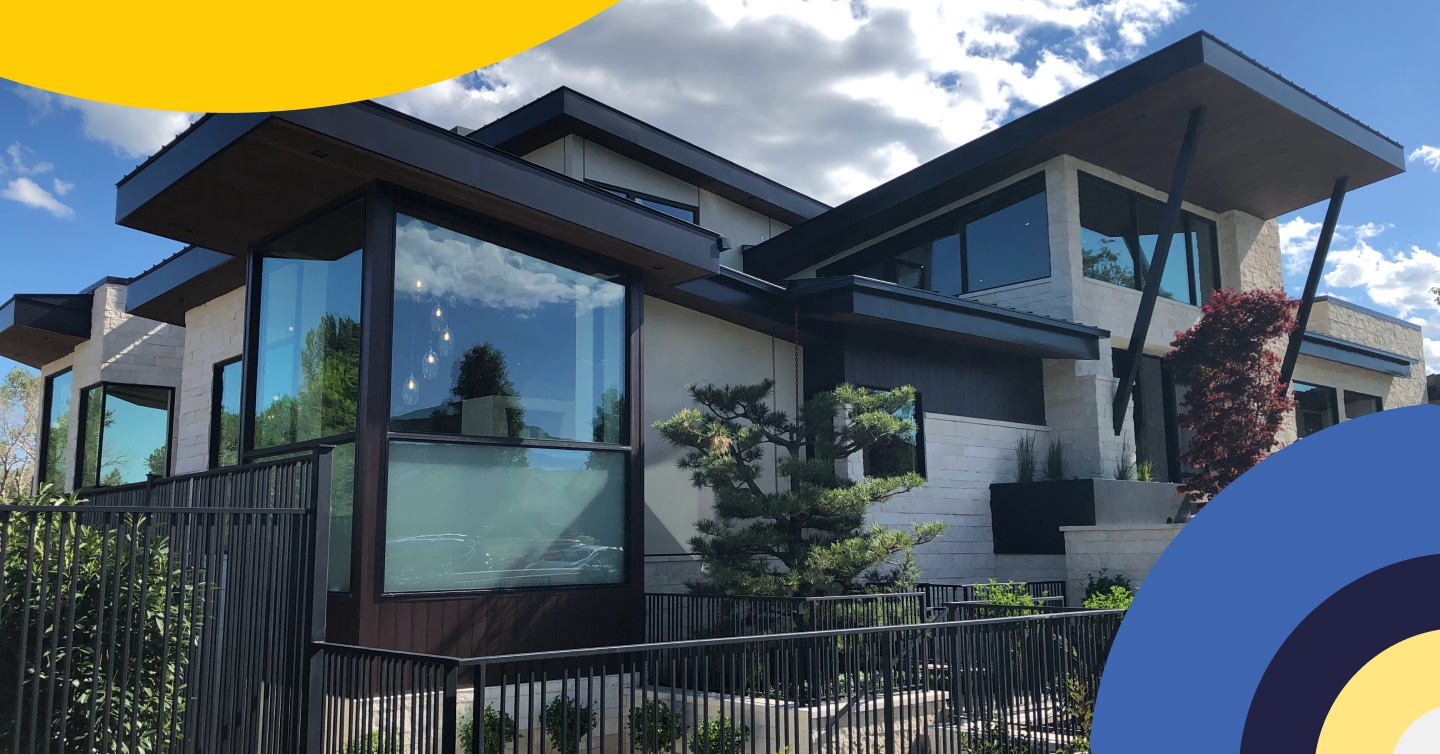Featured articles #Mortgage Basics
Featured articles #Mortgage Basics
What Is an RRSP? Registered Retirement Savings Plan Explained

Table of contents
For Canadians, the Registered Retirement Savings Plan (RRSP) is one of the most popular ways to save for retirement. Created in 1957 by the Government of Canada, RRSPs offer unique tax advantages, encouraging Canadians to save for future retirement plans.
Unlike other savings accounts, RRSPs reduce your taxable income and allow investments within the account to grow tax-deferred until withdrawal. With various account types, contribution limits, and investment options, RRSPs provide flexibility for retirement planning, with benefits that can extend beyond retirement.
Key Takeaways
- Contributions are tax-deductible, lowering your taxable income each year.
- Investments within an RRSP grow without being taxed until withdrawal, which is ideal for long-term savings.
- Various RRSP account types exist to meet diverse investment and financial needs.
What Is an RRSP?
A Registered Retirement Savings Plan (RRSP) is a tax-deferred account registered with the Canada Revenue Agency (CRA) that helps Canadians save and invest for retirement. With an RRSP, contributions can be used to reduce your taxable income. Additionally, any gains within an RRSP are exempt from tax as long as the funds remain in the plan.
Once you begin receiving payments from the RRSP, the amounts will become taxable. Since withdrawals under an RRSP typically occur during retirement, this unique feature allows you to benefit from tax deductions and deferred taxes on investment growth to later years when your income is expected to be lower, helping you build retirement wealth and lower your overall tax burden.
Benefits of an RRSP
RRSPs offer several benefits that make them ideal retirement savings in Canada:
- Immediate Tax Savings: Contributions to an RRSP reduce your annual taxable income, providing immediate tax relief. For example, if you contribute $10,000 to an RRSP and are in a 30% tax bracket, you could save approximately $3,000 in taxes.
- Tax-Free Growth: Any investment income earned within the RRSP, whether from interest, dividends, or capital gains, grows tax-free until withdrawal. This tax deferral allows your investments to grow and only be taxed when you start withdrawing from the plan.
- Flexibility for Major Life Events: While RRSPs are meant for retirement, they can be leveraged as part of programs like the Home Buyers’ Plan (HBP) and Lifelong Learning Plan (LLP) that allow tax-free withdrawals for a first home purchase or education expenses, with structured repayment terms.
Types of RRSPs
Several types of RRSP accounts offer flexibility depending on your personal or family financial goals:
Registered Retirement Savings Plan (RRSP)
This is the most common type registered in your name. You make contributions and benefit directly from the tax advantages and gains of the investments held in the plan.
Spousal RRSP
A spousal RRSP allows a higher-earning partner to contribute to their spouse’s RRSP, which can provide a tax advantage by splitting retirement income. Contributions made by one partner will enable them to benefit from the tax deduction immediately while allowing more balanced tax obligations in retirement.
Group RRSP
Employers offer group RRSPs, which work similarly to individual accounts but are administered through payroll deductions. Employers may match contributions, helping employees save more efficiently for retirement.
Registered Pension Plan (RPP)
An RPP is an employer-sponsored retirement savings plan registered with the CRA to provide a pension to retired employees. Like an RRSP, an RPP allows you to defer taxes until retirement. RPPs can either be defined contribution pension plans (DCPP), where you manage the investment or a defined benefit pension plan (DBPP), where the plan administrator manages the investment.
Contributions are based on a percentage of your salary and are typically made by employees and matched by the employer. DBPPs provide a secure retirement income that will be paid monthly. DCPPs offer an account balance at retirement, allowing you to decide how much to withdraw.
Pooled Registered Pension Plan (PRPP)
This plan allows employees and self-employed individuals who do not have access to a workplace pension plan to make contributions. Individuals can be enrolled in the PRPP by their employer if they participate in the plan or through a PRPP administrator directly if self-employed or their employer does not participate.
Locked-in RSP
If you leave your employer or are laid off before retirement, you will have a specified timeline to convert your employer’s managed group RRSP or RPP into a locked-in RSP.
A locked-in retirement account (LIRA) is a financial product similar to an RRSP; however, it is locked in until retirement age. This means you cannot access the funds for programs like the HBP or LLP since this type of RSP is locked until you reach retirement age. However, they allow full or partial unlocking of funds for other reasons, such as financial hardship or shortened life expectancy. LIRAs are provincially regulated in all provinces except for BC, PEI and Nova Scotia.
A locked-in retirement savings plan (LRSP) works the same way as a LIRA, following the same restrictions that it is locked until retirement age. However, the difference is that LRSPs are federally regulated pension funds, except provincially in BC, PEI, Nova Scotia, Yukon and NWT.
LRSPs and LIRAs must be converted to a Locked-in Income Fund (LIF) before or in the year you turn 71.
Find a better rate, and we’ll match it, beat it, or give you $500*.
*Conditions Apply
With nesto, it’s stress-free
Contribution Limits, Deadlines, and Penalties
Understanding RRSP contribution rules can help maximize tax benefits without being penalized for overcontributing.
- Annual Contribution Limit: Each year, you can contribute up to 18% of your previous year’s income, up to a maximum limit set by the CRA, which changes yearly. The CRA provides your exact contribution limit on your Notice of Assessment and through your My CRA Account.
- Carry-Forward Room: If you don’t use your full contribution room in a given year, the unused amount can be carried forward indefinitely, allowing higher contributions in future years. This enables you to reduce taxes in a year when your income might be higher than expected.
- Contribution Deadline: The deadline to contribute to your RRSP for the previous tax year is typically 60 days after the calendar year-end, usually March 1st or February 29th in leap years.
- Penalties: If you exceed your RRSP deduction limit by more than $2,000, you will typically be taxed 1% per month on the excess contributions until you withdraw them.
Withdrawals from an RRSP
While RRSPs are meant to be used in retirement, there are options for withdrawing funds before retirement should you need them.
- Retirement Withdrawals: Funds withdrawn during retirement are taxed as income at your marginal rate, which may be lower than during your working years.
- Early Withdrawals: You can withdraw funds early; however, withholding tax applies, and the amount is added to your taxable income. Additionally, any early withdrawals permanently reduce your contribution room.
- Special Programs (HBP and LLP): The HBP lets first-time homebuyers withdraw up to $60,000, while the LLP allows withdrawals up to $10,000 in a calendar year to a total limit of $20,000 for education costs. Both programs have specific repayment terms and eligibility criteria, enabling you to use your RRSP savings for critical life milestones.
RRSPs vs. TFSAs: Which Is Better?
RRSPs and TFSAs (Tax-Free Savings Accounts) offer tax advantages but serve slightly different purposes. Here’s how they compare:
| Feature | RRSP | TFSA |
|---|---|---|
| Contributions | Tax-deductible Lowers taxable income |
Not tax-deductible Contributions are made with after-tax dollars |
| Age Limit | Matures and must be closed (converted to an RRIF or LIF or annuity) by the end of the year you turn 71. | No limit |
| Withdrawals | Taxable as income Contribution room is lost when withdrawn. |
Tax-free withdrawals Contribution room is added back in the following year when withdrawn. |
| Best For | Those with a higher income today that expect lower income at retirement. | Those looking for flexible savings or investment options or who are in a lower tax bracket today. |
| Ideal Uses | Long-term retirement savings or to save for the HBP or LLP. | Flexible savings for short or long-term goals, including emergencies or downpayment. |
| Drawbacks | All income types are taxed at your marginal tax rate when withdrawn. | Dividends from US securities have a 15% withholding tax. It does not allow day trading; otherwise, it is treated as business income. |
RRSP Conversion to RRIF or Annuity at Age 71
RRSPs provide flexibility up to a certain age, but the CRA mandates that RRSPs must be closed by the end of the year in which the account holder turns 71. At that point, you have three main options:
- Convert to a Registered Retirement Income Fund (RRIF): This option lets you keep your investments growing tax-free, with minimum annual withdrawals taxed as income.
- Purchase an Annuity: An annuity provides a fixed income stream for a set period or for life, ideal for stable retirement income.
- Cash Out: This is usually the least favourable option since all funds are taxed as income in the year of withdrawal. This could potentially result in higher taxes, reducing your other government retirement benefits.
Frequently Asked Questions
In this section, we’ll answer some of the frequently asked questions about the Registered Retirement Savings Plan.
What are the tax benefits of an RRSP?
RRSP contributions reduce your taxable income, providing immediate tax savings. Investment growth within the account is tax-deferred until withdrawal, making it ideal for long-term savings.
How much can I contribute to my RRSP each year?
You can contribute up to 18% of your previous year’s income up to the CRA’s annual limit. Any unused contribution room can be carried forward indefinitely.
What happens if I go over my RRSP contribution limit?
Excess contributions over $2,000 incur a 1% monthly penalty. Withdraw excess amounts as soon as possible to avoid further penalties.
Can I withdraw from my RRSP before retirement?
Yes, but early withdrawals are subject to withholding tax and reduce your contribution room. However, withdrawals under the HBP or LLP are tax-free if repaid within set timeframes and do not impact your contribution room.
What types of investments can I hold in an RRSP?
RRSPs can hold various assets, including cash, mutual funds, exchange-traded funds (ETFs), stocks, bonds, and term deposits (GICs).
When do I have to stop contributing to my RRSP?
You must stop contributing by December 31 of the year you turn 71. That same year, you must convert your RRSP to an RRIF, purchase an annuity, or cash out.
What’s the difference between an RRSP and a TFSA?
While both accounts offer tax benefits, RRSPs are tax-deferred and designed for retirement, whereas TFSAs are tax-free, flexible, and suitable for various savings and investment goals.
What happens to my RRSP when I retire?
You can start withdrawing funds at retirement or convert your RRSP to an RRIF or annuity. Withdrawals are taxed as income, typically lower than during your working years, as your income is likely reduced in retirement.
Final Thoughts
An RRSP offers versatile savings with immediate tax benefits, deferred taxable growth, and flexibility for life events, making it one of the best options for Canadians to utilize for retirement savings. Whether you’re looking to maximize tax savings, save for retirement, or achieve specific goals like homeownership, an RRSP provides valuable benefits.
For tailored advice on utilizing your RRSPs for your home-buying journey, connect with nesto’s mortgage experts to help you make the most of your hard-earned savings and financial future.
Why Choose nesto
At nesto, our commission-free mortgage experts, certified in multiple provinces, provide exceptional advice and service that exceeds industry standards. Our mortgage experts are non-commissioned, salaried employees who provide impartial guidance on mortgage options tailored to your needs and are evaluated based on client satisfaction and advice quality. nesto aims to transform the mortgage industry by providing honest advice and competitive rates using a 100% fully digital, transparent, seamless process.
nesto is on a mission to offer a positive, empowering and transparent property financing experience – simplified from start to finish.
Contact our licensed and knowledgeable mortgage experts to find your best mortgage rate in Canada.
Ready to get started?
In just a few clicks, you can see our current rates. Then apply for your mortgage online in minutes!















